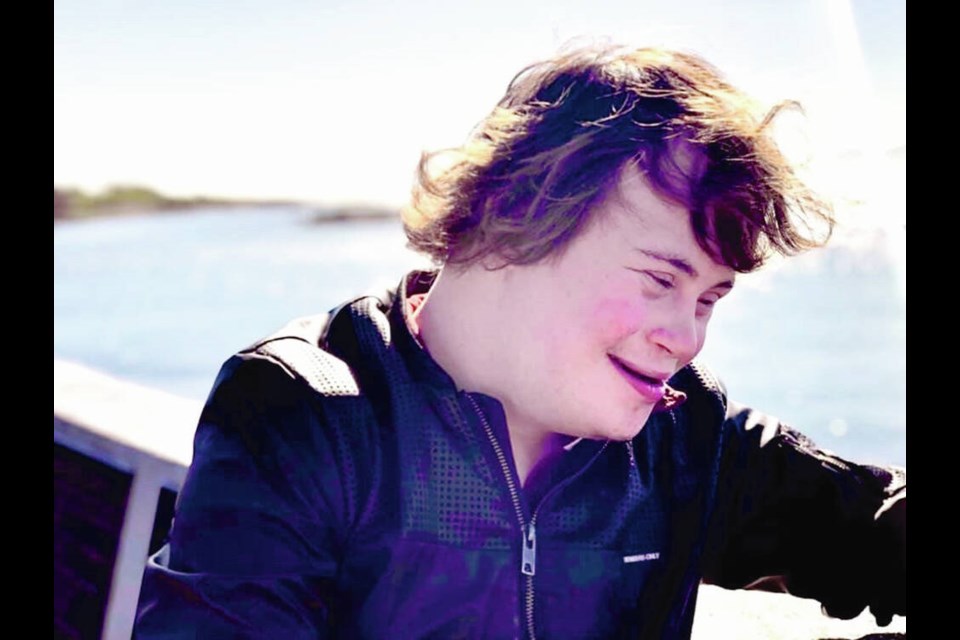A commentary by a lawyer and educator who served as the special counsel on Indigenous reconciliation to the Minister of Justice and Attorney General of Canada, Jody Wilson-Raybould.
My son, Darwyn, had autism and down syndrome. He died last summer at the age of 16, after a lifetime of medical fragility that included three major open-heart surgeries.
Darwyn was a lucky boy. With two lawyers as parents, and a protective and assertive big sister, he was never short of advocates.
Yet, with all of his privileges, he still could not be protected from the additional suffering caused by British Columbia’s ineffective system of supporting neurodiverse children.
Getting Darwyn’s autism diagnosis took a few years. By the time he was diagnosed, a fundamental age-period for critical treatment had passed.
Funding supports were never sufficient. There were never, at any time in Darwyn’s life, respite services available that could handle the depths of his needs.
Summer programs for special needs children were not able to accommodate him. The school district tried to shut the only school that had the capacity to educate him and other high incidence and medically fragile children.
I could go on.
Last week, the B.C. government announced it was going to impose a new “needs-based” system located in “hubs,” remove the need for diagnosis and stop funding children and families directly to choose the interventions and supports they need.
One would think, given Darwyn’s experience, that I would support such a shift. I do not.
The plan laid out by British Columbia might be a solution to a problem of servicing neurodiverse children somewhere. But it is not the solution to the challenges in British Columbia.
At the heart of the problem that the proposed changes seek to address are the unacceptable delays in diagnosing the challenges children face.
But how can any reasonable solution be to minimize the role of diagnosis itself?
Diagnosis has a scientific and medical purpose — to understand the specific conditions and symptoms that an individual person has, and design an approach to address it. This is how all medical science proceeds.
We seek to apply expertise and understanding to a challenge, and then prescribe what may be done.
How many of you wish to be treated for a medical condition without being diagnosed?
But instead of trying to address the delays in diagnosis, and actually improve our diagnostic capacity — through increased supports and access and new diagnostic standards — the approach by the B.C. government is to minimize the importance of diagnosis.
This will not result in better services for children like Darwyn. Moving away from individualized care, and to generic systems, is never better.
It results in less focused, targeted, and effective services where an understanding of the specific needs and reality of the children themselves is reduced.
Simply stated, this is anti-scientific. And it is also a recipe for discrimination.
Neurodiverse children are exactly that — diverse. Their conditions, and the causes of their conditions are quite varied and distinct. A few children have quite severe, rare, and complex needs, and they are extremely vulnerable.
Others, the majority, while definitely in need of specialized services and care, are not.
When systems become more generic and less individualized, the inevitable result is a system designed around a neurodiverse “norm”, and not a system that is responsive to the specialized needs of each child.
The end result being that the most complex and vulnerable children will suffer the most, as they are the furthest way from the generic norm imagined by centralized “hubs” operating without proper diagnosis.
This is all a polite way of saying the most vulnerable will be the most exposed to harm. They will be discriminated against because their needs do not fit the norm of what a generic service system is designed to do.
To be clear, there is a path forward for the B.C. government to avoid causing such harms to children.
Which is to place its current plans on hold, and listen to and work with children, families, and caregivers to understand solutions to the actual challenges that exist.
This would include exploring how individualized funding and “hubs” may be combined. It would also involve assessing the specific needs and factors that have impacted services for children with disabilities as a result of life during COVID — something that apparently was not considered in the development of the B.C. government’s current plan, which they have said was based on work and engagement in 2019.
But if the B.C. government does not change course, we should have no illusions about the types of discrimination and harm that may result.
Darwyn experienced such discrimination when he was at his weakest.
When he was dying, he was referred to the child palliative care system in B.C. The child palliative care system in B.C. is effectively a “hub” system — there is one hub in Vancouver and one in the Fraser Valley.
Except there was a problem. Darwyn wasn’t dying properly — not in the way the system was designed to service dying children.
Specifically, we were told, he was severely autistic, and the system was not designed for dying children like him. So, we would learn, there was no palliative care bed available for Darwyn like there was for the “typical” dying child.
Darwyn died at home in his own bed.
If the British Columbia government follows through with its unscientific and discriminatory hub model, the most vulnerable children will suffer more in life, and perhaps, like Darwyn, continue to suffer more in death also.



